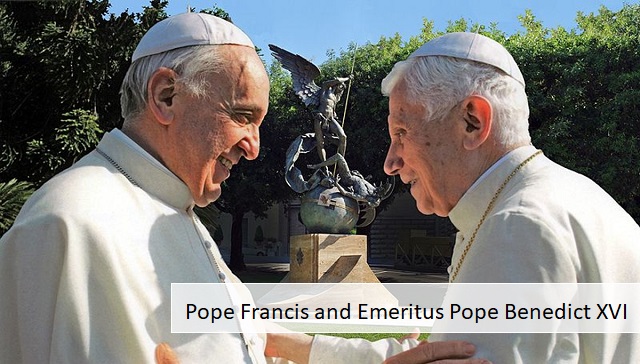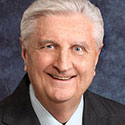The Catholic Church and Paedophilia: The Story Never Ends
By MercatorNet – Navigating Modern Complexities

Allegations made against Benedict XVI have to be placed in the context of the times.
The tragic saga of sexual abuses of minors committed by Catholic priests never seems to end.
The latest episode in a story that is damaging, perhaps irreparably, the image of the Church is a report commissioned by the German Archdiocese of Munich and Freising on sexual abuses committed by clergy in the diocesan territory from 1945 to 2019. The report speaks of “at least 497” victims and “mistakes” made by successive archbishops in their handling of priests accused of abuses.
The study became headline news material because from 1977 to 1982 the Archbishop of Munich and Freising was Joseph Ratzinger, the current Pope Emeritus Benedict XVI. He was blamed for his failure to intervene in four cases.
The clamour around Benedict XVI has overshadowed three other interesting aspects of the German report.
The first is that, as in the previous French case, this is not an investigation by the State or other external authorities into the Catholic Church, but a study commissioned and paid for by the Church itself, which in Munich as in Paris wanted to know more about what actually happened.
The second is that, even considering the smaller size of the territory of the Archdiocese of Munich and Freising compared to the whole of France, the subject of the previous study, the number of victims appears smaller, and perhaps more realistic.
In reality, comparing the two reports is difficult. In Munich specific cases with names and surnames were counted. In France an algorithm created from the number of known episodes a hypothetical figure on the possible total cases, which were assumed to have remained mostly hidden. The French figure was regarded as likely exaggerated by several scholars, some of them otherwise critical of the Catholic Church.
The third aspect is that the peak of reported cases in these reports refers to the years 1970–1990. It is too early to draw conclusions, because many cases are discovered years or even decades after the events, but the hypothesis that the stricter measures introduced by Benedict XVI himself and then by Pope Francis had some good effects does not seem unlikely.
As for Benedict XVI, he has already answered that in the cases he is accused of, he strictly followed the canonical rules of the time. Assessing this statement would require access to the complete files of these cases, but at first sight Pope Ratzinger’s self-defence makes some sense. We should not forget that the rules of the late 1970s were not those of today. A bishop who would not have applied the rules of the time and would have punished or reported clergy in the absence of definite and final evidence would have exposed himself to a canonical and perhaps even a civil trial for slander brought by the accused priest.
Today’s norms are happily much stricter and are essentially the result of reforms introduced by Benedict XVI. In fact, there is no substantial difference between Pope Ratzinger and Pope Bergoglio on the subject of paedophile priests. Francis has taken a few more steps, but in a direction Benedict XVI had already outlined.
This does not mean that there are no differences in the way the two Pontiffs handle what appears as the greatest crisis of contemporary Church.
What is different is communication. Pope Benedict thundered against paedophile priests in tones no less severe than Pope Francis. However, he also reacted firmly, sometimes pointedly, when international media or governments such as Ireland’s and even United Nations commissions quoted statistics that the Church considered exaggerated or false, or proposed measures that seemed to endanger the freedom and independence of Catholic bishops.
Pope Francis probably believes that on these points his predecessor had some good reasons to complain, but he is also aware that every attack on those who criticize the Church on the issue of paedophilia has a catastrophic cost in terms of image. It gives the impression that the Church still wants to somehow cover up for paedophile priests or justify its past mistakes.
And yet even expressing understanding for the motives of exasperated governments and opening a dialogue with critical media has not proved sufficient. Francis’ media offensive that, even on the subject of paedophilia, has sought to give an image of openness, transparency, and listening to criticism has had some initial success, but seems to have lost momentum.
Pope Francis himself now shows a certain weariness when addressing these topics in public.
Benedict XVI’s measures can be further refined, although there is not much more the Church can do, without being accused of violating in a macroscopic way in its canonical processes the right to defence, which even a priest accused of paedophilia maintains like any other defendant. Additional independent investigations can be promoted and financed by the Church. For instance, many are asking for one in Italy as well. Perhaps there will be a Church-commissioned report on Italy, but it will not very much change the global picture. A more open and friendly communication with the media may be implemented. Yet, it is not likely that the climate will really change.
Even if it were possible to reduce to zero the number of current cases of abuse, which seems unlikely, it is reasonable to think that there are still thousands of cases from 40 or 50 years ago waiting to be discovered, not to mention the work of historians going back to the 19th century.
Many believe that a breakthrough would happen if the Church renounced priestly celibacy.
A few years ago, together with other scholars, I was asked for a confidential opinion about this point by a Vatican department. I answered that the Church could find other good reasons to open the priesthood in every situation (as already happens today for some Eastern Catholic Churches and also in the West in particular cases) to married men, but the measure in itself would not solve the problem of paedophilia. Other scholars shared my position.
This was not a philosophical opinion but a statistical one. It derived from the fact that serious problems of paedophilia exist even in religious organizations that do not impose celibacy on their ministers, and that in society in general many paedophiles are married men.
The paedophilia of Catholic clergy has something mysterious and profound about it. Both Benedict XVI and Francis have repeatedly expressed this feeling. For those who believe in it, it is difficult to resist the suggestion that the hand of Evil, which Catholic tradition personifies in the Devil, is at work behind a frightening problem that apparently can be mitigated but not solved.
Both Pontiffs, the reigning and the emeritus, have repeatedly suggested that investigations, norms, and decrees, while useful, are not enough, and a profound moral and spiritual renewal of the Church is needed.
Bishops and cardinals who would think of using this crisis instrumentally for the usual Roman Curia manoeuvring, perhaps to eliminate opponents appointed by Pope Ratzinger and still in place, or for a war of attrition that would prepare the next conclave, would simply show that they have not understood the enormity of the drama.
Republished with permission from Bitter Winter.
COLUMN BY
Massimo Introvigne
Massimo Introvigne is an Italian sociologist of religions. He is the founder and managing director of the Center for Studies on New Religions (CESNUR), an international network of scholars who study new… More by Massimo Introvigne
EDITORS NOTE: This MercatorNet column is republished with permission. ©All rights reserved.

This article is courtesy of DrRichSwier.com, an online community of citizen journalists, academics, subject matter experts, and activists to express the principles of limited government and personal liberty to the public, to policy makers, and to political activists. Please visit DrRichSwier.com for more great content.

